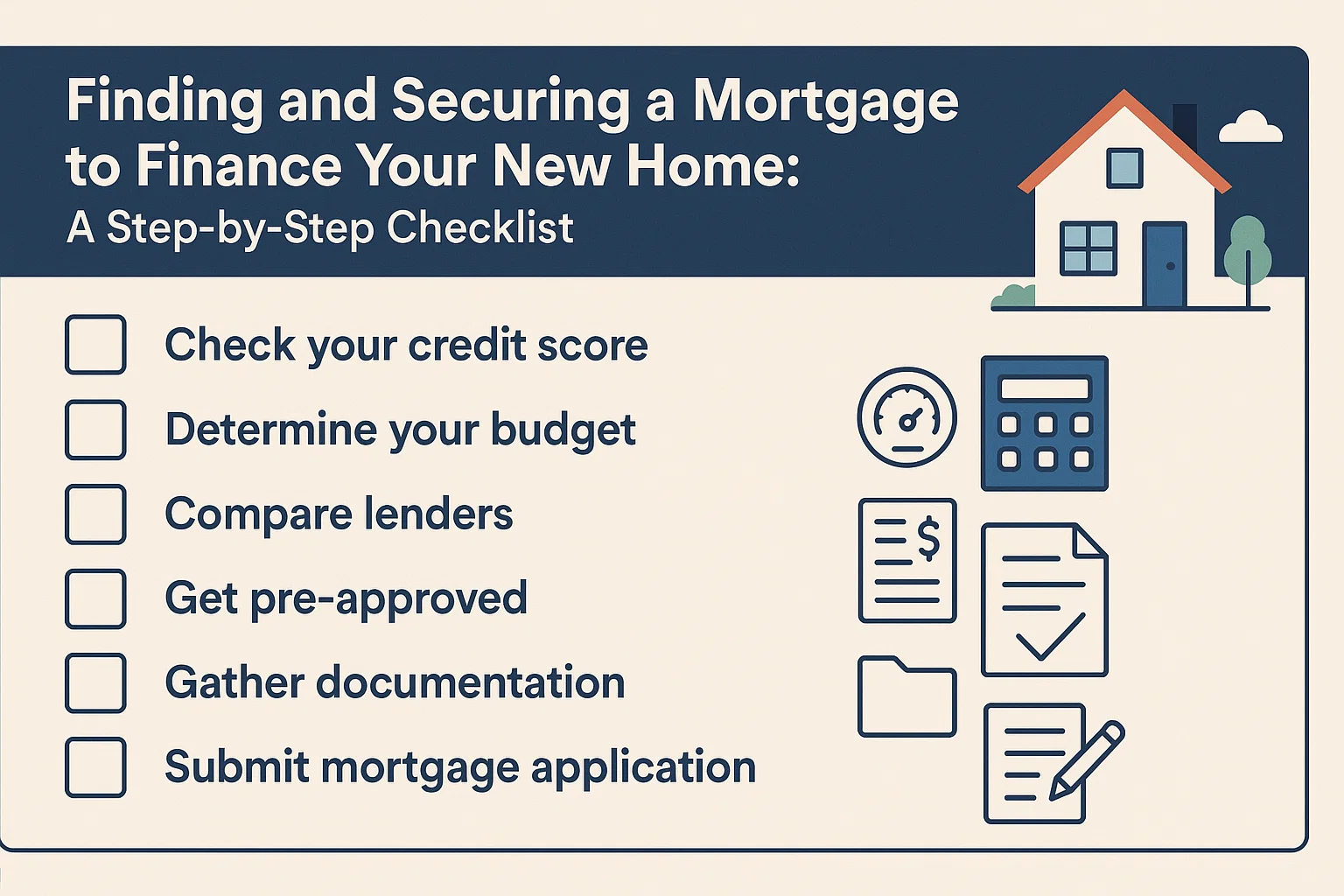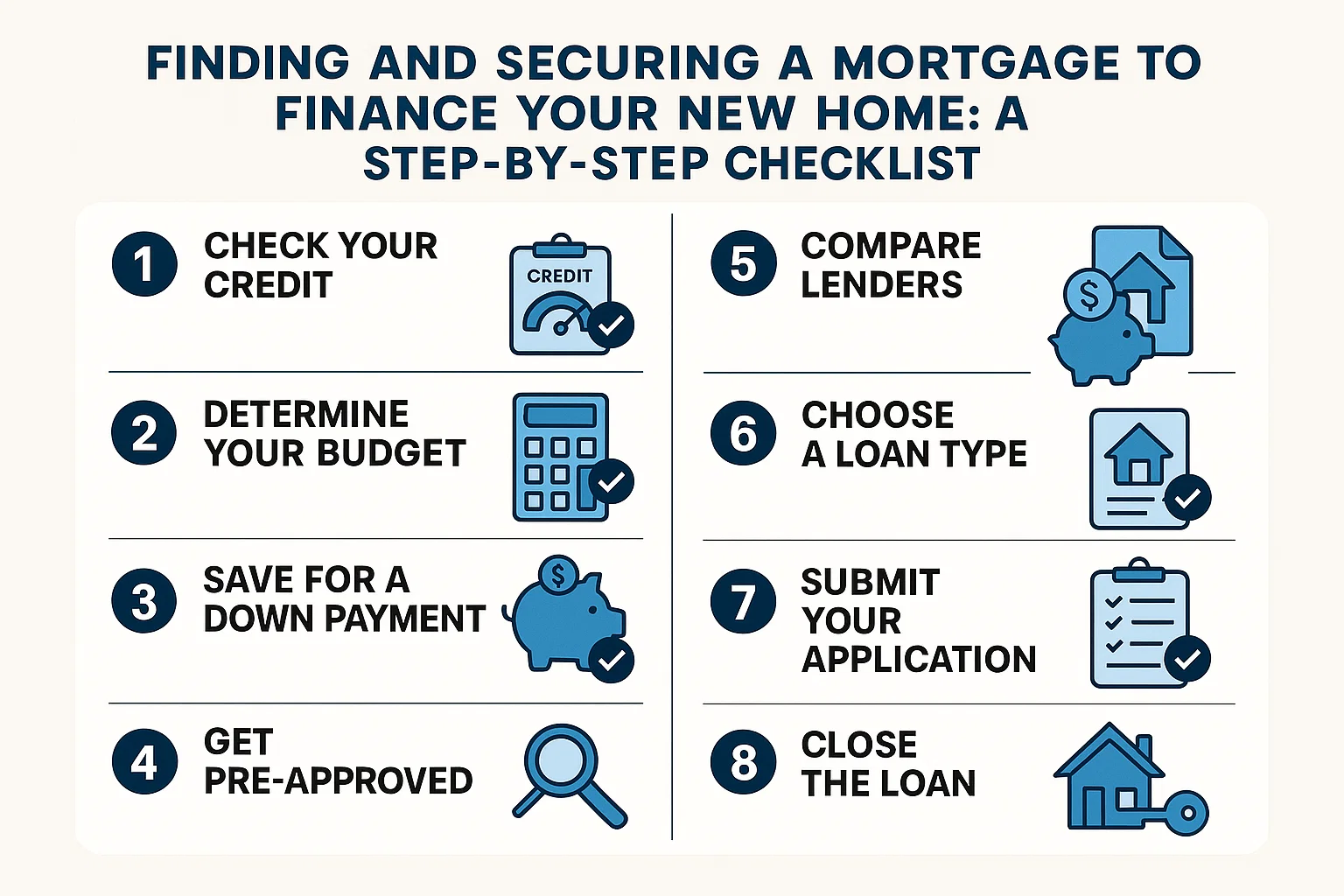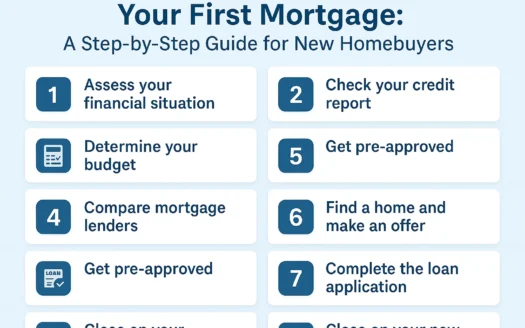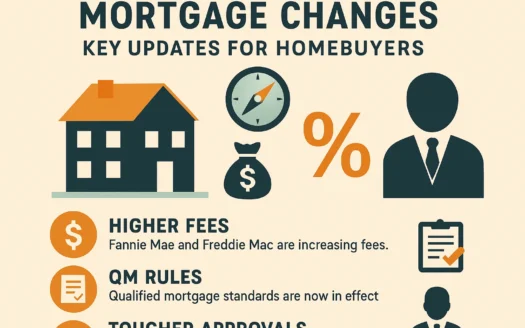Finding and Securing a Mortgage to Finance Your New Home: A Step-by-Step Checklist

Finding and Securing a Mortgage to Finance Your New Home: A Step-by-Step Checklist
Navigating the mortgage process for your new home can feel overwhelming, especially as a first-time buyer. However, breaking it down into manageable steps can simplify the journey. This checklist will guide you through preparation, paperwork, and securing the most cost-effective loan. Let’s begin with the first four steps, which should be completed well before actively shopping for a loan.
1. Review Your Overall Financial Picture
- Analyze your monthly income, living expenses, and savings or equity available for a down payment.
- Calculate your debt-to-income (DTI) ratio—the percentage of your gross monthly income allocated to existing debts (credit cards, loans, etc.).
- Use online resources to estimate affordability. For detailed guidance, review the article “How Much Home Can You Really Afford?”
2. Check Your Credit Reports
- Request free annual reports from all three credit bureaus (Equifax, Experian, TransUnion).
- Dispute errors or outdated information with creditors immediately. Federal law guarantees your right to accurate reports.
3. Check Your FICO Scores
- FICO scores determine mortgage eligibility and rates. Aim for a score of 680+ to qualify and 740+ for the best rates.
- Purchase your FICO scores directly from credit bureaus or via myFICO.com.
4. Compare Mortgage Types
- 30-Year vs. 15-Year Loans: Longer terms lower monthly payments; shorter terms build equity faster.
- FHA/VA/Rural Loans: Low down payments and credit requirements.
- Adjustable-Rate Mortgages (ARMs): Fixed rates initially, then adjust annually. Riskier if rates rise.
- Conventional Loans: Ideal with a 20% down payment.
5. Shop for a Mortgage
- Compare rates, terms, and lender reputations online and locally.
- Note: Quotes are non-binding until you submit a formal application.
Key Factors to Compare:
- Interest Rates: Small rate differences often reflect varying fees.
- Points: Upfront fees to lower rates. Choose lower points for short-term homeownership.
- Annual Percentage Rate (APR): Reflects the true cost of the loan, including fees.
- Rate Lock Costs: Fees to guarantee rates beyond 30, 45, or 60 days.
- Debt-to-Income Limits: Confirm your DTI aligns with lender requirements.
- Loan Amount: Verify the lender’s maximum offer based on your finances.
- Turnaround Time: Average processing duration from application to closing.
- Junk Fees: Scrutinize origination, processing, and application charges.
6. Select the Best Lender
- Choose the loan with the lowest total cost and terms that fit your goals.
- Request a pre-approval letter to strengthen homebuying offers.
7. Find a Home and Sign a Purchase Contract
- Submit a copy of the signed contract with your loan application.
8. Submit a Formal Loan Application
- Review the lender’s Truth in Lending Disclosure and Good Faith Estimate within three business days.
- Clarify fees and confirm closing details upfront.
9. Monitor Loan Processing
- Track the appraisal, underwriting requests, and potential delays.
- Request a copy of the appraisal and review it for accuracy.
10. Review the Settlement Sheet (HUD-1)
- Compare line-item charges with initial estimates three days before closing.
- Dispute discrepancies immediately.
11. Closing Day
- Sign final documents. Congratulations—you’re a homeowner!




